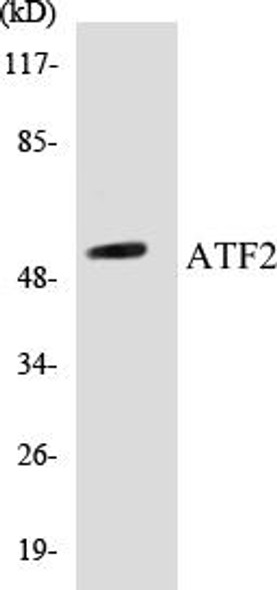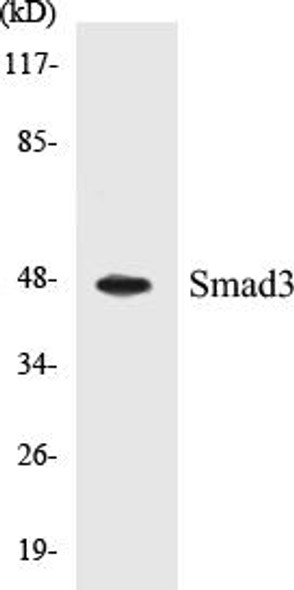Epigenetics and Nuclear Signaling
XRCC4 Colorimetric Cell-Based ELISA Kit
- SKU:
- CBCAB00910
- Product Type:
- ELISA Kit
- ELISA Type:
- Cell Based
- Research Area:
- Epigenetics and Nuclear Signaling
- Reactivity:
- Human
- Detection Method:
- Colorimetric
Description
| Product Name: | XRCC4 Colorimetric Cell-Based ELISA |
| Product Code: | CBCAB00910 |
| ELISA Type: | Cell-Based |
| Target: | XRCC4 |
| Reactivity: | Human |
| Dynamic Range: | > 5000 Cells |
| Detection Method: | Colorimetric 450 nmStorage/Stability:4°C/6 Months |
| Format: | 96-Well Microplate |
The XRCC4 Colorimetric Cell-Based ELISA Kit is a convenient, lysate-free, high throughput and sensitive assay kit that can detect XRCC4 protein expression profile in cells. The kit can be used for measuring the relative amounts of XRCC4 in cultured cells as well as screening for the effects that various treatments, inhibitors (ie siRNA or chemicals), or activators have on XRCC4.
Qualitative determination of XRCC4 concentration is achieved by an indirect ELISA format. In essence, XRCC4 is captured by XRCC4-specific primary antibodies while the HRP-conjugated secondary antibodies bind the Fc region of the primary antibody. Through this binding, the HRP enzyme conjugated to the secondary antibody can catalyze a colorimetric reaction upon substrate addition. Due to the qualitative nature of the Cell-Based ELISA, multiple normalization methods are needed:
| 1. | A monoclonal antibody specific for human GAPDH is included to serve as an internal positive control in normalizing the target absorbance values. |
| 2. | Following the colorimetric measurement of HRP activity via substrate addition, the Crystal Violet whole-cell staining method may be used to determine cell density. After staining, the results can be analysed by normalizing the absorbance values to cell amounts, by which the plating difference can be adjusted. |
| Database Information: | Gene ID: 7518, UniProt ID: Q13426, OMIM: 194363, Unigene: Hs.567359 |
| Gene Symbol: | XRCC4 |
| Sub Type: | None |
| UniProt Protein Function: | XRCC4: Involved in DNA non-homologous end joining (NHEJ) required for double-strand break repair and V(D)J recombination. Binds to DNA and to DNA ligase IV (LIG4). The LIG4-XRCC4 complex is responsible for the NHEJ ligation step, and XRCC4 enhances the joining activity of LIG4. Binding of the LIG4-XRCC4 complex to DNA ends is dependent on the assembly of the DNA-dependent protein kinase complex DNA-PK to these DNA ends. Homodimer and homotetramer in solution. The homodimer associates with LIG4, and the LIG4-XRCC4 complex associates in a DNA-dependent manner with the DNA-PK complex formed by the Ku p70/p86 dimer (XRCC6/XRCC5) and PRKDC. Seems to interact directly with PRKDC but not with the Ku p70/86 dimer. Interacts with XLF/Cernunnos. Interacts with APTX and APLF. Widely expressed. Belongs to the XRCC4 family. 3 isoforms of the human protein are produced by alternative splicing. |
| UniProt Protein Details: | Protein type:DNA repair, damage Chromosomal Location of Human Ortholog: 5q14.2 Cellular Component: nucleoplasm; DNA ligase IV complex; centrosome; condensed chromosome; DNA-dependent protein kinase complex; cytosol; nucleus; cell junction Molecular Function:protein C-terminus binding; protein binding; DNA binding; ligase activity Biological Process: pro-B cell differentiation; positive regulation of neurogenesis; central nervous system development; viral reproduction; immunoglobulin V(D)J recombination; in utero embryonic development; isotype switching; T cell differentiation in the thymus; DNA repair; double-strand break repair via nonhomologous end joining; positive regulation of fibroblast proliferation; double-strand break repair; response to gamma radiation; DNA ligation during DNA repair; negative regulation of neuron apoptosis; positive regulation of ligase activity; response to X-ray Disease: Short Stature, Microcephaly, And Endocrine Dysfunction |
| NCBI Summary: | The protein encoded by this gene functions together with DNA ligase IV and the DNA-dependent protein kinase in the repair of DNA double-strand break by non-homologous end joining and the completion of V(D)J recombination events. The non-homologous end-joining pathway is required both for normal development and for suppression of tumors. This gene functionally complements XR-1 Chinese hamster ovary cell mutant, which is impaired in DNA double-strand breaks produced by ionizing radiation and restriction enzymes. Alternative transcription initiation and alternative splicing generates several transcript variants. [provided by RefSeq, Sep 2008] |
| UniProt Code: | Q13426 |
| NCBI GenInfo Identifier: | 44888352 |
| NCBI Gene ID: | 7518 |
| NCBI Accession: | Q13426.2 |
| UniProt Secondary Accession: | Q13426,Q9BS72, Q9UP94, A8K3X4, |
| UniProt Related Accession: | Q13426 |
| Molecular Weight: | 336 |
| NCBI Full Name: | DNA repair protein XRCC4 |
| NCBI Synonym Full Names: | X-ray repair complementing defective repair in Chinese hamster cells 4 |
| NCBI Official Symbol: | XRCC4 |
| NCBI Protein Information: | DNA repair protein XRCC4; X-ray repair cross-complementing protein 4; X-ray repair, complementing defective, repair in Chinese hamster |
| UniProt Protein Name: | DNA repair protein XRCC4 |
| UniProt Synonym Protein Names: | X-ray repair cross-complementing protein 4 |
| Protein Family: | Xrcc4-like factor |
| UniProt Gene Name: | XRCC4 |
| UniProt Entry Name: | XRCC4_HUMAN |
| Component | Quantity |
| 96-Well Cell Culture Clear-Bottom Microplate | 2 plates |
| 10X TBS | 24 mL |
| Quenching Buffer | 24 mL |
| Blocking Buffer | 50 mL |
| 15X Wash Buffer | 50 mL |
| Primary Antibody Diluent | 12 mL |
| 100x Anti-Phospho Target Antibody | 60 µL |
| 100x Anti-Target Antibody | 60 µL |
| Anti-GAPDH Antibody | 60 µL |
| HRP-Conjugated Anti-Rabbit IgG Antibody | 12 mL |
| HRP-Conjugated Anti-Mouse IgG Antibody | 12 mL |
| SDS Solution | 12 mL |
| Stop Solution | 24 mL |
| Ready-to-Use Substrate | 12 mL |
| Crystal Violet Solution | 12 mL |
| Adhesive Plate Seals | 2 seals |
The following materials and/or equipment are NOT provided in this kit but are necessary to successfully conduct the experiment:
- Microplate reader able to measure absorbance at 450 nm and/or 595 nm for Crystal Violet Cell Staining (Optional)
- Micropipettes with capability of measuring volumes ranging from 1 µL to 1 ml
- 37% formaldehyde (Sigma Cat# F-8775) or formaldehyde from other sources
- Squirt bottle, manifold dispenser, multichannel pipette reservoir or automated microplate washer
- Graph paper or computer software capable of generating or displaying logarithmic functions
- Absorbent papers or vacuum aspirator
- Test tubes or microfuge tubes capable of storing ≥1 ml
- Poly-L-Lysine (Sigma Cat# P4832 for suspension cells)
- Orbital shaker (optional)
- Deionized or sterile water
*Note: Protocols are specific to each batch/lot. For the correct instructions please follow the protocol included in your kit.
| Step | Procedure |
| 1. | Seed 200 µL of 20,000 adherent cells in culture medium in each well of a 96-well plate. The plates included in the kit are sterile and treated for cell culture. For suspension cells and loosely attached cells, coat the plates with 100 µL of 10 µg/ml Poly-L-Lysine (not included) to each well of a 96-well plate for 30 minutes at 37°C prior to adding cells. |
| 2. | Incubate the cells for overnight at 37°C, 5% CO2. |
| 3. | Treat the cells as desired. |
| 4. | Remove the cell culture medium and rinse with 200 µL of 1x TBS, twice. |
| 5. | Fix the cells by incubating with 100 µL of Fixing Solution for 20 minutes at room temperature. The 4% formaldehyde is used for adherent cells and 8% formaldehyde is used for suspension cells and loosely attached cells. |
| 6. | Remove the Fixing Solution and wash the plate 3 times with 200 µL 1x Wash Buffer for five minutes each time with gentle shaking on the orbital shaker. The plate can be stored at 4°C for a week. |
| 7. | Add 100 µL of Quenching Buffer and incubate for 20 minutes at room temperature. |
| 8. | Wash the plate 3 times with 1x Wash Buffer for 5 minutes each time. |
| 9. | Add 200 µL of Blocking Buffer and incubate for 1 hour at room temperature. |
| 10. | Wash 3 times with 200 µL of 1x Wash Buffer for 5 minutes each time. |
| 11. | Add 50 µL of 1x primary antibodies (Anti-XRCC4 Antibody and/or Anti-GAPDH Antibody) to the corresponding wells, cover with Parafilm and incubate for 16 hours (overnight) at 4°C. If the target expression is known to be high, incubate for 2 hours at room temperature. |
| 12. | Wash 3 times with 200 µL of 1x Wash Buffer for 5 minutes each time. |
| 13. | Add 50 µL of 1x secondary antibodies (HRP-Conjugated AntiRabbit IgG Antibody or HRP-Conjugated Anti-Mouse IgG Antibody) to corresponding wells and incubate for 1.5 hours at room temperature. |
| 14. | Wash 3 times with 200 µL of 1x Wash Buffer for 5 minutes each time. |
| 15. | Add 50 µL of Ready-to-Use Substrate to each well and incubate for 30 minutes at room temperature in the dark. |
| 16. | Add 50 µL of Stop Solution to each well and read OD at 450 nm immediately using the microplate reader. |
(Additional Crystal Violet staining may be performed if desired – details of this may be found in the kit technical manual.)






